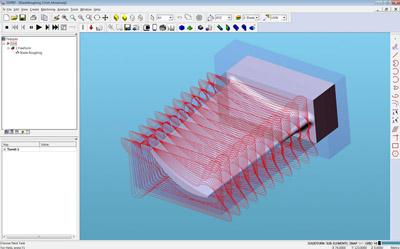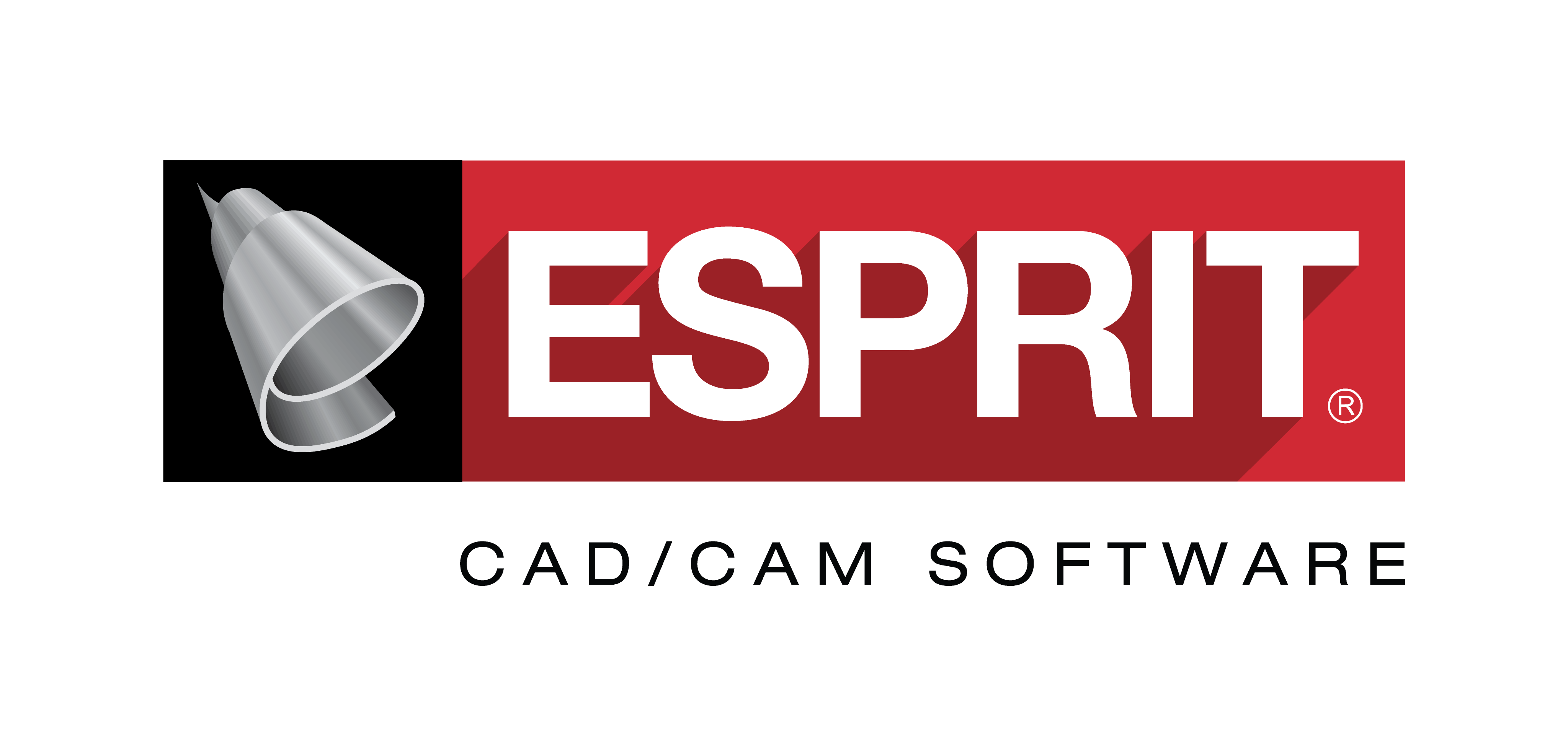
DP Technology Corp. announces the release its ESPRIT 2015 CAM software. ESPRIT helps increase productivity for a full range of machine tool applications by generating more efficient toolpaths while also saving time by providing substantial improvements in CNC programming productivity, according to the company.
Besides increasing productivity, the release also provides many new and improved features specifically in the areas of intelligent machining, strategic machining, CAD/CAM data exchange and cloud-enabled CAM.
Intelligent machining features in ESPRIT 2015 accelerates the machining process by providing new and unique 5-Axis cycles that reduce cycle time. This makes it possible to completely machine blades in a single setup. ESPRIT's 5-Axis Blade Roughing tool motion is morphed across the blade from any size stock shape to uniformly offset stock allowance so it can be immediately followed by a finishing cycle.
"ESPRIT 2015 offers unique features in 5-axis to make complex machining more efficient, allowing users to have more tool path options with features like blade roughing and chamfering." said Cedric Simard, Global Marketing & Communication Director of DP Technology. "ESPRIT 2015 blade roughing enables users to remove material down to uniform stock around the blade and eliminates the need to follow semifinish cycles. Users in the aerospace, energy, medical and automotive industries will benefit the most from these time-saving operations for precision parts."
The Port Roughing cycle, another intelligent machining improvement in ESPRIT 2015, is a new 5-Axis cycle. It creates a 5-axis roughing operation to remove the material inside an area where the tool must enter through a restricted opening. The shape of the toolpath is an offset of the port surfaces, starting at the surface and proceeding inward at a constant stepover.
ESPRIT 2015 also includes features that increase machining productivity. The new Bottom Up roughing strategy helps take ESPRIT's ProfitMilling high-speed material removal cycle to the next level. The new Bottom Up strategy lets users attain a small residual stock height during the stock removal process. Even more, it can be combined with ProfitMilling high-speed machining roughing technology for a major improvement in overall productivity. ProfitMilling optimizes toolpaths with engagement angle, chip load, lateral cutter force and material-removal rate to significantly reduce cycle time and increase tool life.
The strategic machining capabilities of ESPRIT 2015 have been expanded with completely redesigned stock automation capabilities for multitask machines with mill, turn and drill capabilities. Available for the facing, contouring and pocketing milling cycles, the new stock automation function maintains awareness of the stock removed by previous operations to generate cutting passes only in areas where stock remains. This function greatly reduces air cutting, which in turn drastically reduces cycle time.
Additional strategic machining improvements have been made by providing support for slot mill tools in the Port Milling and Composite cycles. Slot mill tools save machining time on operations as tee-slotting and square shoulder milling and their geometry generates lower cutting forces in soft materials and unstable setups which increases tool life. Barrel-shaped cutters are now supported in 5-Axis Blade and Composite cycles. Barrel-shaped cutters provide a much better surface finish than ball endmills because their geometry provides a larger effective radius of engagement, resulting in smaller cusps between toolpaths.
New data exchange features in ESPRIT 2015 make it easier ever before to move information from your CAD system into the CAM environment. Three new geometry types (sketches, feature profiles and curves) are now available through ESPRIT FX data exchange from Dassault Systemes CATIA, Parametric Technology Pro/ENGINEER and Siemens NX/UG. The additional information obtained from these geometry types can be easily manipulated to cover complex areas for roughing operations or extend surfaces to get a better finish on edges.
ESPRIT 2015 provides another important improvement to shorten programming time by increasing the accuracy of automated feature recognition. The enhanced Auto Chain support for solid faces, loops and edges lets users create chain features directly on solid models. In addition, a redesigned wall feature recognition command automatically recognizes the upper and lower limits of walls, even tapered walls, in a solid model.
ESPRIT 2015 allows users to select tools based on the features of the parts in minutes, saving the drudgery of flipping through catalogs to find ideal tooling. With the ESPRIT MachiningCloud connection, programmers have access to complete and up-to-date tooling product data, cutting hours of programming time by eliminating manual tool creation. ESPRIT 2015 simplifies the selection of cutting tools and automatically obtains the recommended ones.
Contact Details
Related Glossary Terms
- chamfering
chamfering
Machining a bevel on a workpiece or tool; improves a tool’s entrance into the cut.
- computer numerical control ( CNC)
computer numerical control ( CNC)
Microprocessor-based controller dedicated to a machine tool that permits the creation or modification of parts. Programmed numerical control activates the machine’s servos and spindle drives and controls the various machining operations. See DNC, direct numerical control; NC, numerical control.
- computer-aided design ( CAD)
computer-aided design ( CAD)
Product-design functions performed with the help of computers and special software.
- computer-aided manufacturing ( CAM)
computer-aided manufacturing ( CAM)
Use of computers to control machining and manufacturing processes.
- gang cutting ( milling)
gang cutting ( milling)
Machining with several cutters mounted on a single arbor, generally for simultaneous cutting.
- milling
milling
Machining operation in which metal or other material is removed by applying power to a rotating cutter. In vertical milling, the cutting tool is mounted vertically on the spindle. In horizontal milling, the cutting tool is mounted horizontally, either directly on the spindle or on an arbor. Horizontal milling is further broken down into conventional milling, where the cutter rotates opposite the direction of feed, or “up” into the workpiece; and climb milling, where the cutter rotates in the direction of feed, or “down” into the workpiece. Milling operations include plane or surface milling, endmilling, facemilling, angle milling, form milling and profiling.
- milling machine ( mill)
milling machine ( mill)
Runs endmills and arbor-mounted milling cutters. Features include a head with a spindle that drives the cutters; a column, knee and table that provide motion in the three Cartesian axes; and a base that supports the components and houses the cutting-fluid pump and reservoir. The work is mounted on the table and fed into the rotating cutter or endmill to accomplish the milling steps; vertical milling machines also feed endmills into the work by means of a spindle-mounted quill. Models range from small manual machines to big bed-type and duplex mills. All take one of three basic forms: vertical, horizontal or convertible horizontal/vertical. Vertical machines may be knee-type (the table is mounted on a knee that can be elevated) or bed-type (the table is securely supported and only moves horizontally). In general, horizontal machines are bigger and more powerful, while vertical machines are lighter but more versatile and easier to set up and operate.
- solid model
solid model
3-D model created using “building blocks.” This is the most accurate way of representing real-world objects in CAD.
- toolpath( cutter path)
toolpath( cutter path)
2-D or 3-D path generated by program code or a CAM system and followed by tool when machining a part.

